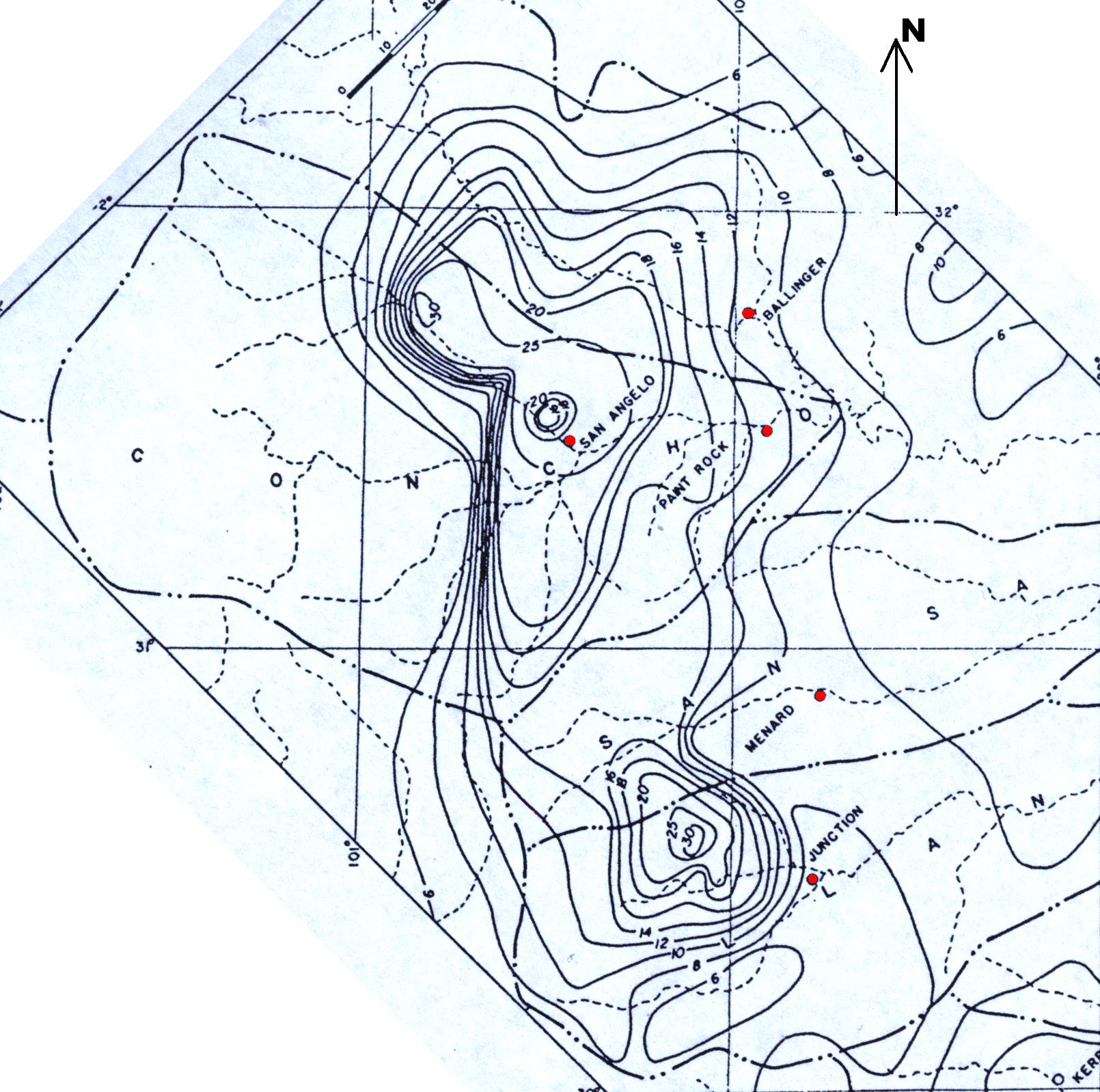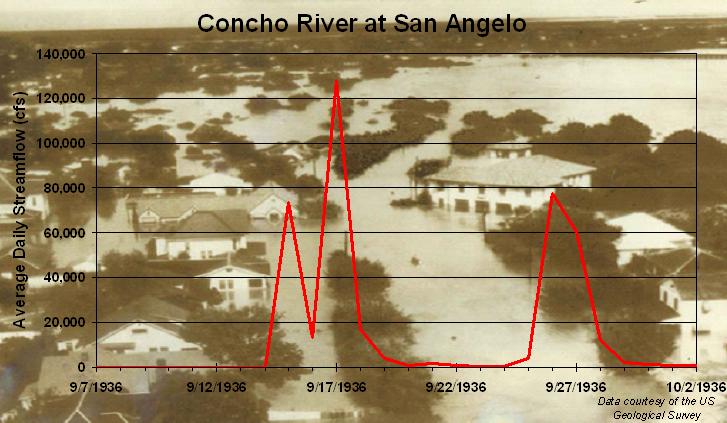September, 1936 Flood Event
Click images to expand.

Meteorological Analysis
The meteorological parameters were very favorable for a major flood of this magnitude (Fig 1). The remnants of a tropical storm which moved into deep South Texas from the Gulf of America on September 14th, was located over the Big Bend by September 16th. A strong stationary front extended from the Big Bend northeast across West Central and Northwest Texas. In addition, an abundant amount of tropical moisture was flowing northwest across West Central Texas during the four day period. These ingredients led to rounds of thunderstorms with very heavy rainfall.
Rainfall Analysis

The month of August, 1936, was a dry month for the Concho Valley with most precipitation stations recording less than 0.50 of an inch of rain. San Angelo recorded 0.08 of an inch of rain for the month of August. The dry antecedent conditions of the West Texas landscape played a little role in absorbing the volume of water produced by the heavy rainfall brought by the mid September event. On September 15, San Angelo received 11.75 inches of rain. The 100-year, 24 hour rainfall amount for the San Angelo area is approximately 8.3 inches. 
Hydrological Analysis
The result of these extraordinary rainfall events was catastrophic flooding. As shown in Figure 4, the average daily streamflows from USGS records indicate that the North and South Concho Rivers rose sharply. A large volume of water was also delivered down the Middle Concho River, but there are no historical records for the river. According to USGS Water-Supply Paper 816, the flood stages reached on the North Concho River were higher than known before.
As shown in Figure 5, three separate flood peaks occurred on the Concho River at San Angelo. USGS Water-Supply Paper 816 indicated that the city of San Angelo suffered greater damage than any other place in the State. The Report states that on September 17, the discharge of the South Concho River reached a maximum of 111,000 cubic feet per second (cfs) and caused stages which backed water up the North Concho River to the center of the city. Just as this water began to recede, the flood from the North Concho River with a peak discharge of 184,000 cfs, reached the city. The river channel was inadequate for this enormous quantity of water and the river broke over its banks, flooding large areas of the residential and business sections of the city.

Twin Buttes Dam provides flood control of the Middle and South Concho Rivers above Lake Nasworthy. According to the U.S. Bureau of Reclamation, Twin Buttes Reservoir has 454,370 acre-feet of capacity assigned to flood control. This flood storage, combined with spillway and outlet works capacities, is sufficient to protect against the inflow design flood with a peak of 725,000 cfs and a three-day volume of 825,000 acre-feet.
Event summarized by:
Mark Cunningham & Jason Johnson